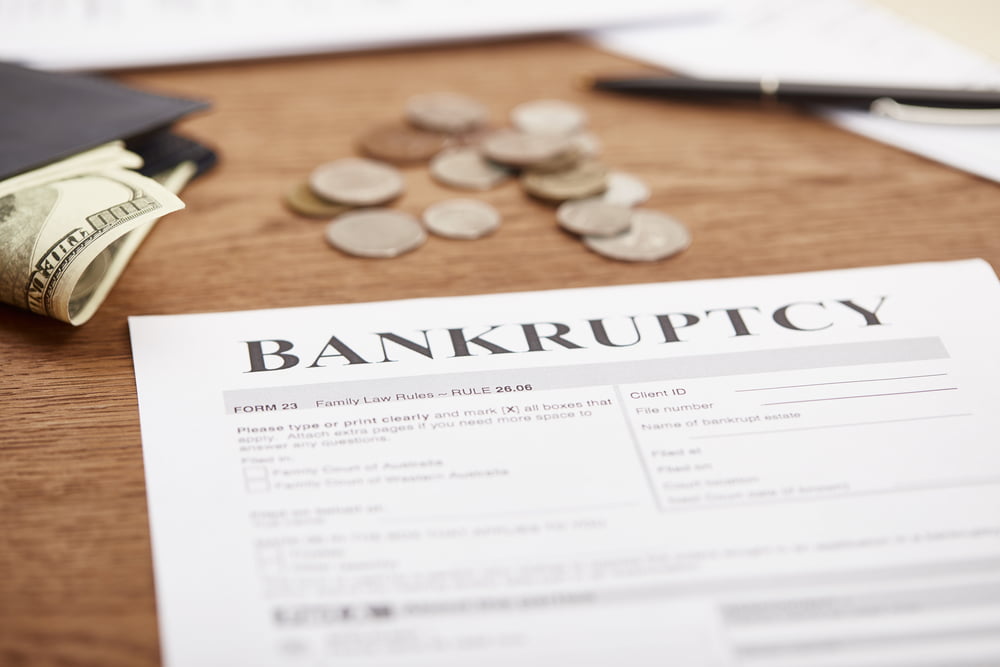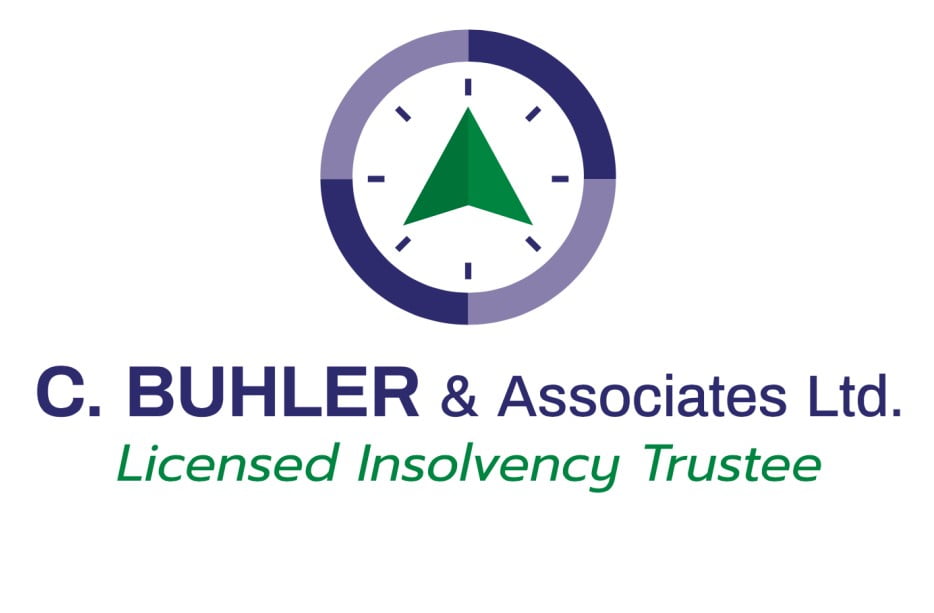A Licensed Insolvency Trustee (LIT)—formerly known as a Bankruptcy Trustee—is an expert in debt solutions. They are licensed by the Office of the Superintendent of Bankruptcy.
When you work with a Licensed Insolvency Trustee, you’re working with a qualified, highly trained expert regulated by the federal government. LITs have a fiduciary duty to provide you with the best financial advice they can—even the fees charged by LITs are federally regulated.

Despite these regulations, there are some misconceptions about working with a Licensed Insolvency Trustee—these misconceptions are common anywhere finances and legal concepts mix. LITs are here to help you—and this article is here to help you clear up any misconceptions you may have.
Understanding Licensed Insolvency Trustees
LITs play an important role in Canada’s financial system. They are the only professionals authorized to administer a number of different debt discharge solutions, including consumer proposals and bankruptcy—both of which will be explored further over the course of this article.
As the only federally licensed and regulated debt advisors in Canada, LITs can advise consumers and business owners – from large multi-million dollar businesses to micro-, small and medium sized businesses – on a number of different debt discharge options. They are not credit counsellors; while not-for-profit credit counsellors can help you develop a realistic plan to pay off your existing debts, they cannot negotiate lower payments with creditors. While a credit counsellor can help with budgeting or understanding your finances better, they don’t have access to the solutions some individuals need when dealing with overwhelming debt.

When a consumer proposal or personal bankruptcy has been filed, your Licensed Insolvency Trustee will deal with creditors on your behalf. The process can also stop unsecured creditors—creditors that don’t have collateral—from starting collection proceedings or legal proceedings against you.
Debt can sometimes seem insurmountable—the skills, knowledge, and authority of a Licensed Insolvency Trustee can offer Canadians a way out of serious debt. We want to encourage any Calgarians who need debt relief to consider working with a LIT. To do that, we need to clear up a few misconceptions.
Misconception 1: Bankruptcy Is the Only Solution for Debt
There’s a widespread belief that LITs are there to help you when you’re filing for bankruptcy—and nothing else.
This couldn’t be further from the truth. In fact, most Canadians working with a Licensed Insolvency Trustee choose an option that isn’t bankruptcy – they choose a Consumer Proposal to reduce or eliminate debt.
While your Licensed Insolvency Trustee can help you file for bankruptcy, they can also offer you a wide variety of other debt-relief options. These include:

- Consumer proposals: In a consumer proposal, your Licensed Insolvency Trustee will work with you to propose new terms to your creditors to reduce the amount you owe or extend the amount of time you have to pay off your debt. A consumer proposal may be a viable option if your total debt (not including your mortgage) is $250,000 or less. A consumer proposal is a government regulated payment plan – you’ll make payments to your LIT, who will then repay creditors on your behalf. Your payments might pay the debt in full, but more often, a Consumer Proposal will pay only a portion of the total debt owed. Debt reductions of up to 70% aren’t uncommon, and consumer proposals also allow you to retain your assets – your house or car – so long as you can manage those payments separate and apart from your proposal payments.
- Debt consolidation: Your LIT can suggest reputable financial institutions that may offer a consolidation loan, and explain the features you should ask about when you meet with a loans officer. These loans are useful for paying off unsecured debt (like credit card debt). Debt consolidation loans in Calgary have lower interest rates than the debt they’re used to pay off, reducing your financial obligations. They may also have a longer repayment schedule.
- Credit counselling: Not all debts need to be restructured or renegotiated to be paid off. While not all LITs in Calgary offer credit counselling, we do—we’ll discuss your options and help you decide which debt relief solution is right for you.
During your initial consultation with us, we’ll discuss the debt solutions we offer—bankruptcy is rarely the only option!
Misconception 2: Bankruptcy Ruins Your Financial Future
Bankruptcy is a debt solution in which your debt is discharged after a period of time. When you file for bankruptcy, any legal action by unsecured creditors is stopped, and your debt is forgiven, with few exceptions.
There are financial consequences to filing for bankruptcy—but they aren’t permanent. When an LIT recommends filing bankruptcy, it’s because they believe that the financial consequences will be less serious than if you don’t file for bankruptcy. Bankruptcy is a viable option for people who can’t pay off their debts in any other way.

Here are some of the financial consequences of bankruptcy:
- Your credit rating will decrease – in many cases, it will ‘reset’ at the lowest possible rating.
- Certain assets may be sold by your LIT to pay off a portion of your debt, in accordance with provincial legislation.
- A portion of your “surplus income” must be paid to the LIT, who will use it to pay off a portion of your debt. (You can learn more about surplus income here)
The financial impact of filing for bankruptcy is not something to be taken lightly—but the point of bankruptcy is to release you from your debts, so you can get a fresh start. Getting your credit score back up will take some time, but through bankruptcy—and the mandatory credit counselling sessions you must attend during bankruptcy proceedings—you and your family can get back on your feet financially. Many people who discuss their situation with an LIT already have a poor credit rating, having already missed payments. Bankruptcy can actually be a ‘line in the sand’ – the point from which your credit will improve – since you can no longer be penalized for missing payments.
Misconception 3: Losing All Assets in Bankruptcy
One of the biggest fears people have about declaring bankruptcy is that they’ll lose all of their assets. While you may be asked to sell some of your assets to pay off a portion of your debt, there are assets that are protected under federal and provincial law. In Calgary, several of your assets are protected, including:
- Clothing
- Household furniture and appliances
- Tools of Trade
- Certai farming assets including land
- Health aids and supports
- Equity in your principle residence (up to $40,000)

Many of these assets are subject to limits that can change over time, and are set by the province. Currently, up to $40,000 worth of equity in real estate is protected—this means people with $40,000 or less of equity in their homes can consider filing for bankruptcy and still keep their home. It’s important to remember, however, that bankruptcy isn’t the only option—people with more than $40,000 of equity in their home might be able to pursue other options, such as a home equity loan or a Consumer Proposal.
Misconception 4: Negative Employment Consequences
Filing for bankruptcy rarely affects a person’s employment. In most cases, your employer will never learn that you filed for bankruptcy. There are a few exceptions to this rule, however:
- If you’re in a wage garnishment program, your LIT will have to inform your employer that you’ve filed for bankruptcy to stop your wages from being garnished.
- People in certain fiduciary roles, like insurance brokers, lawyers, and accountants, may need to inform their employer or professional associations that they’ve filed for bankruptcy.
- Certain professionals may find it difficult to get bonded after filing bankruptcy.

Canadian law forbids employers from firing employees for filing bankruptcy. You may, however, find that the type of work you’re permitted to do changes until you’ve been released from your debts and your credit score improves. Moreover, it may be difficult to find new employment should a potential employer require a credit check.
Importance of Seeking Professional Advice
When you’re facing debt that seems insurmountable, debt relief professionals like LITs and not-for-profit credit counselling agencies can help. When bankruptcy or consumer proposals are the best options, working with an LIT is essential—they’re the only debt professionals with the right to offer these solutions. You can work directly with an LIT – they are an neutral third party in the debt settlement marketplace – and as an Officer of the Court, they are required to follow federal and provincial insolvency law.
Bankruptcy is almost never the only option, and the professional advice offered by your LIT will help steer you toward the best debt relief solutions. There’s no need to guess at which debt solution is right for you—many LITs offer a free consultation to help you understand all the options, and find the best solution for your needs. An LIT will never try to ‘sell’ you a bankruptcy or proposal – they are there to provide you with the information and answers to make your own informed decision.
Working With Licensed Insolvency Trustees in Calgary
LITs are regulated by the federal government—specifically, the Office of the Superintendent of Bankruptcy (OSB). The OSB dictates the rates that LITs can charge, as well as their roles and responsibilities towards creditors. LITs are held to the highest ethical standards, and complaints against LITs are filed directly with the OSB.
Your LIT has a fiduciary responsibility to both you and your creditors—their goal is to work out an arrangement that allows you to pay off as much debt as possible while ensuring that your rights are respected. They have a responsibility to keep both you and your creditors fully informed during the credit proposal or bankruptcy process, and they must remain impartial.
These ethical obligations are taken very seriously by LITs, who must keep on top of any changes to bankruptcy law; they must also avoid any conflicts of interest. When you work with an LIT in Calgary, you’re working with someone who must treat all parties fairly and whose duty is to keep you informed of all your options.
The fees charged by LITs are determined by the OSB, and are the same across the province (in every part of Canada actually!).
Steps To Filing Bankruptcy in Calgary
To file for bankruptcy, you’ll need to find an LIT who is licensed to practise in Calgary to take on your case. You can do this using the OSB’s Find an LIT tool. Be sure to check out their resources – their website, social accounts and see if they are a member of the Canadian Association of Insolvency Trustees (CAIRP). – to see if they are the right person to handle your situation.
Once you’ve found an LIT to take on your case, they’ll discuss your options with you. After hearing all the available options, you may determine that bankruptcy is your best option—if you do, your LIT will fill out the forms required, start your file with the government and walk you through every step.

Once the forms are submitted to the OSB, you’ll have formally declared bankruptcy. When this occurs:
- You will stop making payments directly to your unsecured creditors (your LIT will deal with them on your behalf)
- Any garnishments against your salary will stop
- Any lawsuits against you by your creditors will be stopped
Your creditors may request a meeting of creditors, which your Trustee may hold virtually. If a meeting is held, you would be required to attend. You may also be called before the OSB for examination.
Conclusion
Bankruptcy is not the only option—however, when it’s the best option, the consequences of bankruptcy are often less severe than people are led to believe. We hope this article has helped dispel the myths and misconceptions about LITs and bankruptcy in Calgary—contact us if you have any questions!




